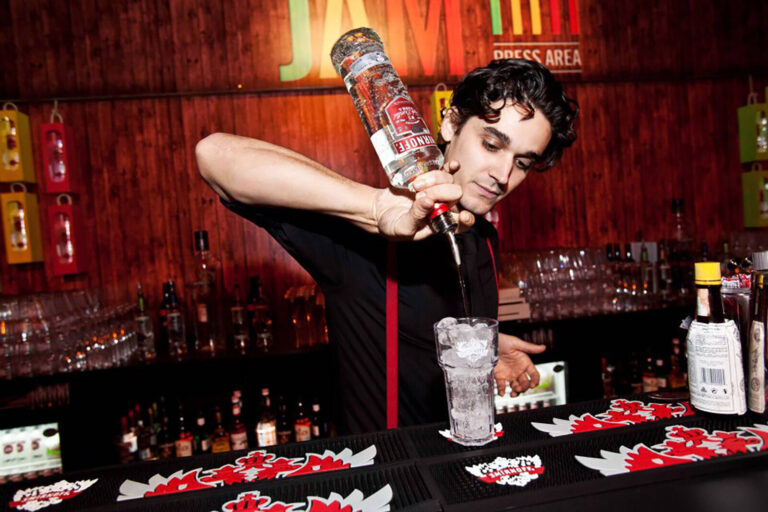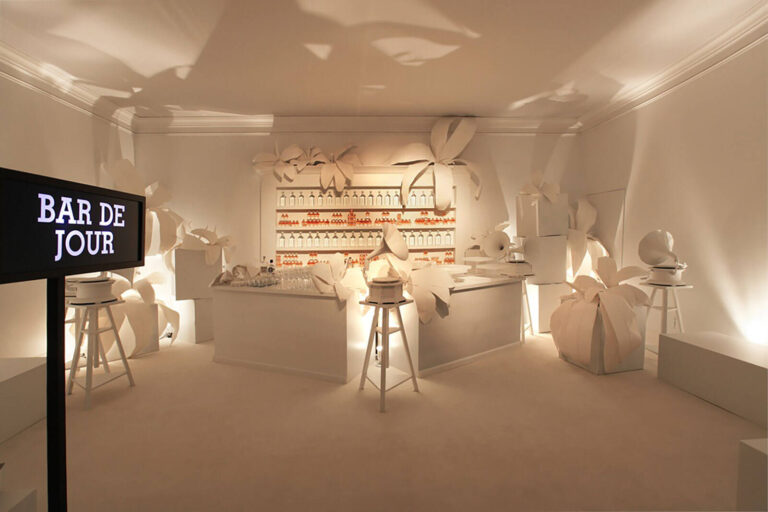Experiential Marketing
In this section we’ll look at experiential marketing, experiential events and other brand marketing events, including:
CONTENTS
IN THIS SECTION
01 A Guide to Experiential Marketing and Experiential Events
What is experiential marketing? A definition with examples of experiential events / campaigns and how these differ to other brand marketing events.
02 Careers in Experiential Marketing / Brand Events
Why become an experiential producer/brand event manager? Career advice and employment information.
03 Being an Experiential Producer
What does an experiential producer do? Read a real experiential producer job description by Marie Davidheiser, Managing Director, iris New York, and former Senior Vice President, Director of Operations, Jack Morton Worldwide.

04 Pros and Cons of Experiential Marketing Careers
Pros and cons of being an experiential producer by Marie Davidheiser, Managing Director, iris New York, and former Senior Vice President, Director of Operations, Jack Morton Worldwide.

05 Being a Brand Event Manager
What does a brand event manager do? Read a real brand event manager job description by Charlotte Saynor, former Head of European Events, Apple and former Vice President, Brands and Events, FremantleMedia Enterprises.

06 Pros and Cons of Brand Event Management Careers
Pros and cons of being a brand event manager by Charlotte Saynor, former Head of European Events, Apple and former Vice President, Brands and Events, FremantleMedia Enterprises.

What is Experiential Marketing?
Traditional brand marketing consisted of communications channels such as advertising, direct mail, packaging, and sales promotions. These channels then evolved to incorporate public relations, sponsorship, events, and digital.
When multiple channels work together, using a similar tone and style, to communicate the brand’s message this is called an integrated marketing campaign.
In recent years, brands have realized that to build relationships with their customers, create an emotional connection, and generate a sense of loyalty, they need to go beyond the traditional ‘one-way’ channels of communication, such as television and press advertising.
This has led to the rise of ‘experiential’ marketing campaigns and brand experience events; ‘two-way’ channels of communication where customers are given the opportunity to engage and interact with brands in a sensory way.

Bringing Brands to Life
Experiential marketing is about bringing the brand to life; targeting a core audience and communicating the brand values by creating memorable experiences that give back or add value to their customers’ lives. By creating an experience, the customer makes an emotional connection with the brand, which they then remember — far more than a traditional advertisement — and hopefully share with others via social media / word of mouth.
Instead of the brand telling its customers about its product through the conventional channels of advertising, experiential marketing enables customers to experience the product and / or its features and benefits, themselves.
Experiential marketing can be used to:
Evolution of Experiential Events
In the past, brand-marketing events were simply defined by type or format, such as product launches, press launches, customer events, sponsored events, premieres, retail events and store openings, roadshows, sales promotions, or sampling events.
Typically, marketing executives would use these events to target press, trade buyers, VIP clients, celebrities, opinion formers, and influencers — hoping that their ‘message’ would then trickle down to a wider consumer audience.
However in the late 2000’s, with the introduction of digital and social media, brands were able to reach out directly to a much bigger audience of everyday consumers and, as such, brand-marketing events were no longer limited to an audience of press, VIP’s, and opinion formers.
Instead, brand-marketing events became more consumer-oriented and social in nature; with the focus being on providing a fun or engaging customer experience associated with the brand.
Photo: Evian Live Young Skate On event, Miami Beach, Florida
In order to engage with consumers, brand-marketing events began to adopt many different formats — to the point where, nowadays, they are not always ‘events’ in the traditional sense. They might include PR stunts, such as flash mobs, pop-up shops / cafes / bars / restaurants / lounges / clubs, brand-owned or brand-sponsored festivals, having a brand presence at festivals — in terms of lounges, stalls, or product sampling, exclusive one-off concerts, roadshows, niche sporting events, and interactive shopping mall installations.
As the format, audience, and content of brand-marketing events evolved, this type of ‘live’ marketing activity became known as ‘experiential’, ‘brand experience’, ‘brand activation’ or, in very crude terms, ‘stunt / guerrilla marketing’.
Examples of Experiential Events
For many brands, experiential marketing is beginning to take center stage at the heart of an integrated marketing campaign, meaning that the traditional channels of advertising, public relations, and digital are all employed to support the live brand experience. (Which is good news for event agencies and planners, as more of the traditional marketing budget is now being used to create live brand-experience events and, as such, it has created more job opportunities for professional event planners.)
Smirnoff Nightlife Exchange Project
An example of this is the Smirnoff Nightlife Exchange Project, a global campaign where initially 14 countries (extended to 50 in year 2) swapped their local nightlife with other countries at special events held around the world on one night. The live brand experience event was then supported by TV, press and outdoor advertising, digital and social media.

Brand Communication Events
Not all brand-marketing events are defined as experiential activity. There is another sub-sector of the events industry, which sits under the umbrella of special events, that deals with other types of marketing, publicity, and sales events for brands — commonly known a brand communication events.
For example, movie premiere events still have marketing and publicity objectives, but they are not considered experiential events.
Many major fashion brands, such as Louis Vuitton and Burberry, regularly hold customer events — either in-store or at event venues — where marketing and sales is the primary objective, but again these are not generally regarded as experiential events.
Similarly, when Montblanc launched their first collection of jewelry at an evening event for press and customers, it too was a marketing and publicity event, yet it was not considered an experiential activity.

Technically, all of these events could be described as brand experience / experiential events; in that they are ‘two-way’ channels of communication, they bring the brand to life, they create an experience for the customer associated with the brand, enable interaction or product demonstration, are shared via social media, and aim drive sales. Yet, typically, these types of events just get included in the category of ‘special events’.
Experiential Events v Special Events
Often it’s a question of scale and target audience that differentiates between experiential events and other special events hosted by brands. Experiential events tend to be designed to reach larger numbers of consumers — perhaps thousands or even hundreds of thousands — and may form part of a wider marketing campaign that makes use of a number of other communication channels, such as advertising, digital or social media. They may also be implemented at a national or international level.
Whereas brand communication events may target a smaller audience — in the hundreds or even less — that might be a niche group of consumers, such as high-spending VIP customers.
Alternatively, the audience might not be consumers at all — it might be trade buyers, media, and / or opinion formers. These events might be ‘stand-alone’ events that are not supported by a wider marketing campaign, or they might simply be smaller events held at a regional or local level.

While experiential makes up an entire sector of the events industry — catered to by specialist experiential marketing agencies that generally contribute to the marketing strategy underpinning the event, brand communication events are considered a sub-sector of special events and organized by traditional special event companies that generally focus more on creative and production, rather than marketing strategy.
reference
1 Experiential Marketing: A Practical Guide to Interactive Brand Experiences, Shaz Smilansky [Kogan Page 2009]
In The Next Section…
02 Careers in Experiential Marketing / Brand Events
Why become an experiential producer / brand event manager? Career advice and employment information.
